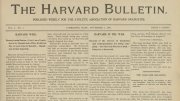
Photograph by Stu Rosner
Toba Spitzer
A few generations ago, no matter how strong their callings, Toba Spitzer ’86, Jennifer (Kirsch) Flatté ’87, and Julia Andelman ’97 would have been banned from the rabbinate. Although American women began demanding the right to become rabbis in the nineteenth century, not until 1972 was the first, Sally Priesand, finally ordained. (Today nearly one-third of the rabbis working in the United States are female.) A closer look at these alumnae and their perspectives offers insight into just how diverse and complex their experiences are, as women inhabiting a new role in an ancient religion within contemporary society.
Toba Spitzer was a political activist in Washington, D.C., in 1988, registering young people to vote and working at the Jewish Peace Lobby, when she heard, one January morning on her car radio, an old recording of Martin Luther King Jr. inveighing against the Vietnam War. “That’s the language I want to be speaking, not just political language,” she recalls thinking. “I want it to be from a moral place.” Though she came from a non-observant family, she decided to become a rabbi.
These days, she is a Reconstructionist, the branch of Judaism whose rabbinical college has been open to women since its founding in 1967. (Spitzer herself worked to establish women’s studies as an undergraduate concentration at Harvard.) She is also a lesbian with a partner and two step-children; when she entered rabbinical school in 1992, she was already “out” and was warned not to expect to find a job. But the world changed during her five years of study, and upon graduation she took the job she still holds: as sole rabbi of a congregation in West Newton, Massachusetts, that worships in a Congregational church and houses its religious school in the Unitarian church down the street.
In 2007, she was named to a two-year term as president of the Reconstructionist Rabbinical Association—the first openly gay rabbi elected to head any rabbinical association, she noted at the start of her acceptance speech—and she gave her denomination credit for its courage and tolerance. She thinks the appointment led to Newsweek’s naming her one of the 50 most influential rabbis in the United States in 2007 and 2008. For her, the rabbinate is a continuation of her work for peace and justice. “I cannot say, ‘I take care of my community or I speak out against the Iraq War,’” she explains. “It is all about ‘What are we trying to build in this world?’”
When she arrived at Harvard in 1983, Jennifer Flatté planned to be a science teacher, but an introduction to medieval Jewish folklore helped her realize that she wanted to teach Jews about Judaism. She completed rabbinical studies in Reform Judaism several years after graduation, while her husband, Michael E. Flatté ’88, earned a doctorate in physics. When they moved to Iowa City, where he had taken a job at the University of Iowa, she became the chaplain at Grinnell College, about an hour’s drive away.
Two years later—although the mother of three children, and a fourth soon after—she accepted an even longer commute: becoming a part-time rabbi in Westminster, Colorado. (The baby shared her weekend round-trip flights for a year.) “They were very full weekends,” she says of her five-year tenure. “My cell phone was a Denver number, so people could call me without having to make a long-distance call. Without modern technology, it would not have been possible.” A modern husband was essential, too. “From the time our first child was born, my husband has fully co-parented,” Flatté explains. “The children ate, they got to their activities, they hung out, they played games. When my son had a hockey tournament, my husband loaded them all up and off they went to Kansas City. And that has certainly made all of this easier.”
But not altogether possible. Being a congregational rabbi became too time-consuming. Flatté says she discovered, “as I guess most parents do, that your children actually get more complicated when they get older, rather than less. The last year I was in Colorado, I was just missing too much.” Now she has what she calls “a freelance rabbinate”: she officiates at weddings and helps colleagues on holidays. Above all, she considers herself a teacher, which is what “rabbi” means—whether offering biblical Hebrew at the University of Iowa’s extension school, introducing the Torah to sixth graders, leading an occasional course at the local synagogue, or inviting people interested in learning more about Judaism into her home.
Julia Andelman grew up within a strong Jewish tradition (her father, although American, has always spoken to her only in Hebrew), but she never considered becoming a rabbi until she traveled to Israel, during her post-sophomore-year summer, on a trip sponsored by Harvard Hillel. Visiting Beersheba, where Abraham is supposed to have lived, and traveling in the desert where the Israelites allegedly wandered transformed her life. Once back at Harvard, she kept to her visual and environmental studies concentration, but also studied Jewish texts.
She is now a Conservative rabbi in one of the oldest congregations in New York City, which she describes as the “capital of Judaism in the Diaspora.” There, she is not only the rabbi but the executive director, program director, building manager, development staff, and public-relations department. Meanwhile, the diversity of her congregation requires her to plan programs and write sermons that appeal to a wide range of ages and levels of observance. “It’s hard to switch from picking the tile for the remodel of the men’s bathroom to preparing a sermon,” she admits. She works 24/7, has little time or energy for a personal life, and confesses, “It is a lonely job.”
Originally she hoped to work in a yeshiva, but has found unexpected satisfaction in the pastoral part of her job. “What I am doing here is serving people’s religious needs—which includes emotional and psychological needs,” she says. “Our tradition teaches that every human being is made in the image of God—that if you destroy one human life, you destroy the whole world. But I experienced this for the first time when I reflected on the people I minister to and must be present for. I have been able to see the image of God in people I didn’t see it in before. That has been a powerful aspect of religious growth for me.”
Despite their individual differences, all three alumnae agree that women have changed the rabbinate and the religion in significant ways. For example, in Judaism, rituals have always existed for life-cycle events and holidays. But women rabbis have introduced and legitimized new prayers and blessings for particularly female life-events, including conception, pregnancy, abortion, miscarriage, child-birth, and the naming of daughters—offering women the opportunity to mark these moments in a Jewish way; they have encouraged women to improvise—to choose their own readings, write their own prayers, invent their own blessings, rather than adopt what has always been done. “Because of who they are, and where they stand, [women rabbis] have had the opportunity to bring Jewish feminism to America’s Jews…in the classroom, in the sanctuary, over Shabbat dinner, and often at the most vulnerable moments of their lives—as they wed, celebrated their newborns, and mourned the dead,” notes historian Pamela S. Nadell, director of the Jewish studies program at American University and author of Women Who Would Be Rabbis: A History of Women’s Ordination, 1889-1985.
“Women,” says Flatté, “are the ones who get messy with life, who deal with the blood and guts, the emotions, the tragedies, the ordinary occurrences”—and so they come to the ancient texts “willing to ask different kinds of questions and be open to different kinds of answers. They are interested in looking for what is between the lines, what stories are missing. Reading these experiences into some of these ancient texts has opened them up for everybody” by allowing biblical heroes—even Moses and Abraham—to be seen as fallible human beings whose lives and mistakes, she adds, offer examples for the rest of us.
Even more revolutionary is the way women have challenged the traditional patriarchal role of the rabbi. Andelman feels so strongly about the detrimental impact of hierarchy that she stands at the same level as her congregation when she leads services, not on a raised platform looking down on them. Nor do these women dictate to their congregants how pious they should be. “I don’t see my role,” Andelman says, “as instructing people to do X or believe X. When I talk about God, I do so in a very open way—trying to keep it as general as possible, to make room for everyone.” Flatté describes her attitude as “Live and let live. I don’t consider it my life’s purpose to have every Jew living a halakhic life—following a lot of Jewish law or participating in every Jewish ritual.” Spitzer agrees: “If I can just get someone to turn off the computer on Friday night and not turn it on again until Saturday night, that’s a huge step. I don’t need them to become Orthodox.”
These alumnae continue to fulfill the traditional rabbinic obligations, but differently, integrating Jewish practices and values more directly into everyday life, including more personal interactions on the religious journey. For Spitzer, this means creating what she calls “covenantal community”—groups that cohere around a shared vision of justice and compassion. Her work is formed of “concentric circles”: in her congregation, in her rabbinic organization, in the world. “I see my goal as saying, ‘Judaism has really powerful spiritual and ethical practices. If we take these on, it will make us better,’” she notes. “I think people are starving for meaning in their lives. We should be offering practices that can help change people’s lives.”
Like many professional women (and men) today, the rabbis struggle to balance their public and private lives. (Spitzer refuses to have a cell phone. Andelman doesn’t give out her cell number and turned down the BlackBerry offered by her congregation.) “The connection between a rabbi and a congregation is not unlike a marriage,” Spitzer says. After seven years, she needed some distance and took a 10-month break. “I was burnt out,” she says. “I felt going on sabbatical was modeling something for my congregation, saying, ‘There are things that are good to do for oneself.’”
But even as some worshippers are inspired, others find the change in the pulpit harder to accept. “Many congregants see a female rabbinate as gendered and a male rabbinate as neutral,” says Andelman. When she was hired in 2006 by her present congregation—in one of the most politically liberal enclaves in the country—some people left because they didn’t believe a woman should be a rabbi. And six weeks into her job, during a sweltering New York summer, a male congregant admonished her in a three-paragraph e-mail for wearing open-toed shoes: a wardrobe choice, he said, that left him questioning whether she had the gravitas to be a rabbi.
Such lingering resistance helps these contemporary rabbis appreciate their predecessors. “The first women who tried rabbinical school were not shown concern or care by their classmates and were not treated with respect by their professors,” says Flatté. “They had to do it the man’s way, and because they did, we didn’t have to as much. To get ahead and be taken seriously, we didn’t have to change who we fundamentally were.”
Elaine Yaffe ’59, a freelance writer living in New York City, is the biographer of Radcliffe’s fifth president, Mary Ingraham Bunting.








